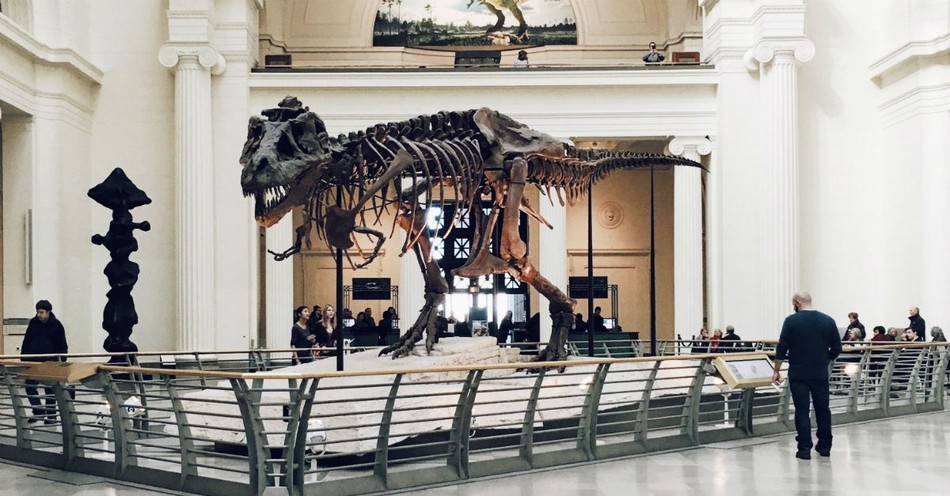As a Christian studying what God says in the Bible, our curiosity and wonder about dinosaurs being real draw us closer to the magnificence of God's creation. In the book of Genesis, we read of God's remarkable work during the six days of creation, including the formation of diverse and wondrous creatures. Though the term "dinosaur" may not be explicitly mentioned in Scripture, the Bible provides glimpses of awe-inspiring creatures like Behemoth and Leviathan, which some scholars believe could be references to dinosaurs or other formidable creatures of ancient times.
Exploring the existence of dinosaurs through a biblical lens leads us to marvel at the intricate design and diversity in God's handiwork, affirming His wisdom and power as the Creator of all things. Our curiosity stirs a deeper appreciation for God's sovereignty, reinforcing our belief that all of creation declares His glory and reveals the extraordinary depths of His creative genius. Let's dive into what the Bible says about dinosaurs.
Did God Create Dinosaurs?
Some Christians argue dinosaurs could not have existed because God would not create such creatures that could wreak havoc upon human civilization. Enormous amounts of archeological evidence deter this argument, but we should also note the Bible mentions God created several other ferocious animals.
"So God created the great sea creatures and every living creature that moves, with which the waters swarm, according to their kinds, and every winged bird according to its kind. And God saw that it was good." (Genesis 1:21)
For instance, he created a fish large enough to swallow the prophet Jonah. Although no one would want to be ripped apart by a T-Rex, spending several days digesting in the belly of a sea creature doesn’t sound like a great way to go either (Jonah 1:17).
Daniel found himself face-to-face with a pack of lions in an enclosed den (Daniel 6). Even though God chose to shut the mouths of the lions so they wouldn’t consume this prophet, in most instances, lions don’t go easy on their prey. In some ways, it might be worse to be torn senseless by lions than by velociraptors.
Even though the exact purpose for which God created dinosaurs may elude us, we cannot deny the evidence that they once roamed the Earth. Their existence leaves an indelible mark on the geological record, their fossilized remains testifying to a time long past. As Christians, we are reminded of the vastness of God's creation, stretching far beyond our comprehension. While we may not fully grasp the specific role dinosaurs played in God's grand plan, their presence serves as a testament to His infinite creativity and power. We embrace the wonder of these ancient creatures, acknowledging that they were a part of the intricate tapestry woven by our Creator.
Are Dinosaurs in the Bible?
Some scholars say yes, others no. This article takes the stance of the affirmative.
Two instances in the Bible could possibly describe a dinosaur, or at least, a dinosaur-like creature. Some theologians will argue the author could have used hyperbole or metaphorical imagery, but if he chose to do so, he picked some rather odd images to describe mundane creatures.
1. Behemoth (Job 40:15-24)
"Behold, Behemoth, which I made as I made you; he eats grass like an ox. Behold, his strength in his loins, and his power in the muscles of his belly. He makes his tail stiff like a cedar; the sinews of his thighs are knit together. His bones are tubes of bronze, his limbs like bars of iron. "He is the first of the works of God; let him who made him bring near his sword! For the mountains yield food for him where all the wild beasts play. Under the lotus plants he lies, in the shelter of the reeds and in the marsh. For his shade the lotus trees cover him; the willows of the brook surround him. Behold, if the river is turbulent he is not frightened; he is confident though Jordan rushes against his mouth. Can one take him by his eyes, or pierce his nose with a snare?"
In Job, this creature is described as having a tail like cedar and an herbivore diet. It also says this colossal beast had large bones like beams of bronze.
From the portrayal in those verses, it seems as though the passage indicates a creature similar to a diplodocus. Some commentators try to say God had described a hippopotamus in this passage, but the depiction doesn’t seem to match up. Hippos, for instance, don’t have tails like cedars.
2. Leviathan (Job 41)
By the next chapter, another creature is reported which some theologians have labeled a crocodile. However, once one hears the features of the leviathan, it doesn’t appear to add up.
The leviathan seems to have armor-plated skin that no hook can pierce. Like the behemoth, the author makes note of the strong limbs this animal possesses.
Psalm 104:26 indicates the leviathan lived in water, which could point to why some people say it’s a crocodile. And Isaiah 27:1 describes the leviathan as a twisting serpent:
"In that day the Lord with his hard and great and strong sword will punish Leviathan the fleeing serpent, Leviathan the twisting serpent, and he will slay the dragon that is in the sea."
These may align with a crocodile, but Job (Job 41:18-19) seem to indicate this creature literally breathed fire. Crocodiles and other similar reptiles have not been known to breathe fire. This may indicate a dragon-like species existed during Job’s time.
Is There Archeological Evidence for the Existence of Behemoth and Leviathan?
We should keep in mind, paleontologists did not dig up the first dinosaur until 1819. And according to World Wide Fund for Nature, 10,000 species go extinct every year. Researchers still have not uncovered all the creatures that existed in other periods of history, perhaps including ones such as the leviathan.
A lack of archeological evidence does not conclude such animals did not exist.
For instance, 10 archeological finds in 2018 alone bolstered evidence for events and people mentioned in Scripture. But before 2018, those historical events and people still had existed, whether archaeological artifacts proved it or not.
Does it matter?
Yes, and no.
It matters in a sense that we can see God’s fingerprints on all of creation, including the dinosaur fossils we pass in museums. It also matters in the sense that if the animals mentioned in Job are, in fact, dinosaurs, this concludes humans and dinosaurs overlapped in time periods of existence.
However, all in all, whether Job referred to a diplodocus or a hippopotamus, this does not affect major doctrinal issues in the Bible. We should keep in mind Scripture doesn’t mention every animal that ever came into existence. This does not mean God didn’t have a hand in creating all living things simply because they don’t receive a specific remark in the Bible.
Hope Bolinger is a literary agent at C.Y.L.E. and a recent graduate of Taylor University's professional writing program. More than 350 of her works have been featured in various publications ranging from Writer's Digest to Keys for Kids. She has worked for various publishing companies, magazines, newspapers, and literary agencies and has edited the work of authors such as Jerry B. Jenkins and Michelle Medlock Adams. Her column "Hope's Hacks," tips and tricks to avoid writer's block, reaches 3,000+ readers weekly and is featured monthly on Cyle Young's blog, which receives 63,000+ monthly hits. Her modern-day Daniel, “Blaze,” (Illuminate YA) just released, and they just contracted the sequel. Find out more about her here.
Photo Credit: Unsplash/Samuel S Lara



.jpg)
